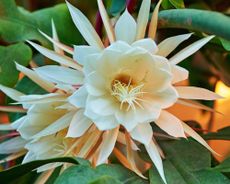Winter Lawn Care: Preventing Bare Spots In The Lawn

I detest lawn weeds, but not for the reason one might think. Like many homeowners, I admit I enjoy having a sea of green grass along with the yellow flowers of dandelions and the leafy protrusions of other weeds. The real reason I detest lawn weeds, however, is because they die in the winter, leaving bare spots in the lawn.
Weeds in Grass, Mud in the House
It's simple math. I have two dogs who go out to do their business approximately six times per day. When weeds die back, the resulting bare spots in the lawn turn to mud in the winter. Mud persists until new plants sprout in late spring. The result is 48 muddy paws per day tracking dirt into my house.
Now I love gardening. I enjoy digging in the dirt and crawling around on my hands and knees planting flowers and veggie plants. Dirt belongs outside though, not on my floors and furniture. I don't particularly care much for housework and I especially don't like wiping up dirty paw prints.
So, when I see summer weeds in grass, I picture muddy paw prints in the winter. The solution is winter lawn care for the yard. Unlike other types of seasonal gardening chores, winter lawn care is performed out of season.
Winter Lawn Care Strategy
A healthy lawn in the winter begins the previous spring. As soon as I can, I reseed bare spots in the lawn with an annual ryegrass seed blend. For my climate, cool-season grass varieties are not recommended for spring sowing, as they have less time to become established before the heat of summer.
Although annual ryegrass is a cool-season grass, it's inexpensive and sprouts quickly. It provides temporary coverage for bare spots, but will likely die out in the summer heat. I look for commercially-blended grass seed mixes containing both annual ryegrass and warm-season varieties like buffalo and Bermuda grass. As the annual ryegrass dies off, the warm-season grasses are ready to fill in the bare spots.
I continue my winter lawn care strategy throughout the summer months. I mow the lawn at recommended heights to encourage strong turf grass roots and a thick lawn. During summer dormancy, I routinely cut the lawn to remove weed seed heads before they bloom.
Gardening tips, videos, info and more delivered right to your inbox!
Sign up for the Gardening Know How newsletter today and receive a free download of our most popular eBook "How to Grow Delicious Tomatoes."
In the fall, I seed bare spots in the lawn with cool-season grasses. I find a blend of Kentucky bluegrass and perennial ryegrass works well in my yard's microclimates. Kentucky bluegrass is extremely winter hardy, but does require a bit more water during the growing season. It grows best in sunnier, moist areas of the lawn.
Perennial ryegrass outperforms Kentucky bluegrass in lightly shaded areas and in drought conditions. Perennial ryegrass germinates faster and the individual plants establish quicker, but it spreads slower than Kentucky bluegrass. By sowing a blend of cool season grasses, the most prolific one for a given microclimate will prevail.
And that's how I keep out the weeds and winter mud.

Laura Miller has been gardening all her life. Holding a degree in Biology, Nutrition, and Agriculture, Laura's area of expertise is vegetables, herbs, and all things edible. She lives in Ohio.
-
 7 Best Dwarf Tomato Plants
7 Best Dwarf Tomato PlantsHave a tiny growing space? Look for dwarf tomato seeds so you don’t miss out on summer’s juicy bounty.
By Susan Albert
-
 5 Night-Blooming Houseplants – Grow An Indoor Moon Garden
5 Night-Blooming Houseplants – Grow An Indoor Moon GardenThere is something uniquely special about night-blooming houseplants. Set the scene for a magical evening indoors with these fragrant flowering beauties.
By Amy Grant